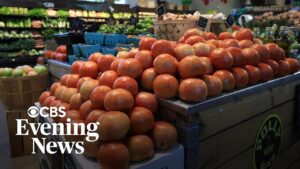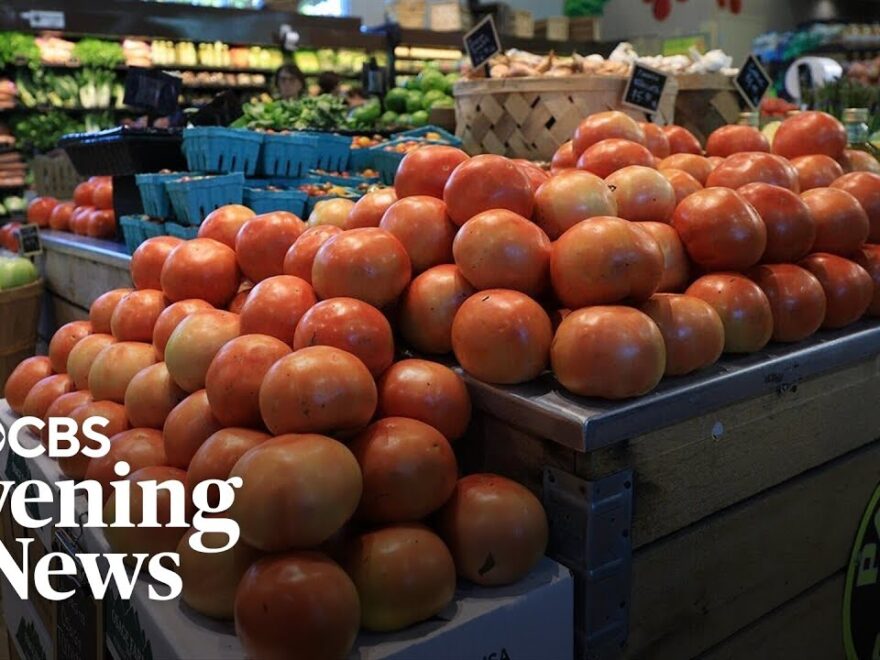- “Food-flation” surges for fresh and dry vegetables
In July, wholesale prices for fresh and dry vegetables skyrocketed by 38.9%—the sharpest summer increase since 1947. This spike is expected to trickle down to consumers soon.(Axios,

Today’s Key Highlights
- “Food-flation” surges for fresh and dry vegetables
In July, wholesale prices for fresh and dry vegetables skyrocketed by 38.9%—the sharpest summer increase since 1947. This spike is expected to trickle down to consumers soon.(Axios, Reuters, ABC News) - Producer prices jump—food leads the charge
The Producer Price Index (PPI) for all goods soared 0.9% in July—the most significant monthly rise since June 2022. Food prices alone increased 1.4%, accounting for 40% of the overall increase in goods prices.(Reuters)
What Consumers Are Facing
- Consumer grocery bills are climbing
U.S. consumers are witnessing about a 2.9% increase in food prices year-over-year (from July 2024 to July 2025). Notably:- Eggs jumped 16.4%
- Poultry rose 3.1%
- Coffee surged 14.5%(WPTV News Channel 5 West Palm, Bureau of Labor Statistics)
- Sector-wide inflation trends
Per the Bureau of Labor Statistics:- The overall food index was flat in July, with food-at-home prices down 0.1%, and food-away-from-home prices up 0.3% for the month.(Bureau of Labor Statistics)
- Over the past year, food-at-home rose 2.2%, while dining out (food-away-from-home) increased 3.9%.(Bureau of Labor Statistics)
- Tariffs and climate pressures exacerbating cost structures
Tariffs on produce from countries like Mexico (up to 25%) and tariffs affecting over 400 goods are pushing wholesale prices higher—contributing to broader inflation.(Axios)
Climate change is also intensifying food cost volatility: extreme weather events from droughts to floods have disrupted food production, pushing up prices globally.(Axios, TIME) - Wholesale shocks may hit restaurant margins
Due to tight cattle supplies and rising input costs, raw beef prices hit $11.49 per pound in June—pinching restaurant earnings. Many chains are adjusting menus and margins in response.(Barron’s)
Quick Overview
| Metric | Current Change |
|---|---|
| Wholesale vegetables | ↑ 38.9% (July) |
| PPI for food | ↑ 1.4% (July); 40% of goods increase |
| Consumer food prices (YoY) | ↑ 2.9% |
| Eggs | ↑ 16.4% |
| Coffee | ↑ 14.5% |
| Food-at-home (YoY) | ↑ 2.2% |
| Dining-out (YoY) | ↑ 3.9% |
What This Means & What to Watch
- Consumers: Prepare for possible grocery price hikes, especially for vegetables, eggs, and coffee.
- Restaurants: Bigger menu cost shifts—some might lean more on high-margin items or diversify offerings.
- Policymakers: Must weigh the inflationary pressure of tariffs against growth and monetary policy targets.
- Long-term Outlook: Climate resilience and tariff policy adjustments will play a key role in stabilizing food prices.
Would you like to dive deeper into regional impacts, specific staples like eggs or coffee, or how to manage your grocery budget in the meantime?
